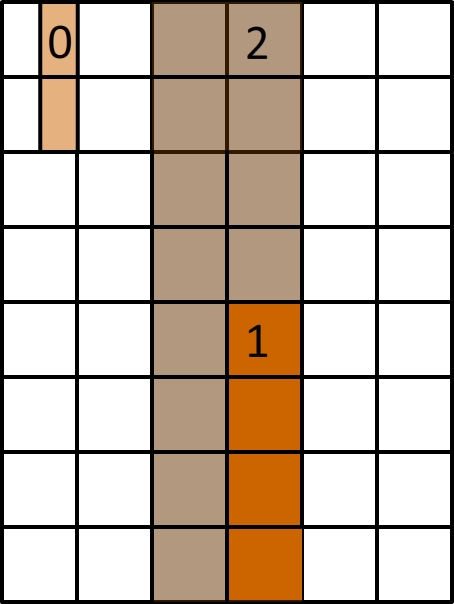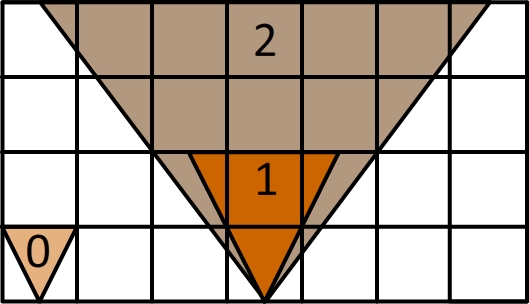 Step Four:
Resolve effects. Most often, this is some form of damage, in which you
attempt to beat the target's toughness. Remember that you only roll one
damage die and compare it to all targets' toughness.
Step Four:
Resolve effects. Most often, this is some form of damage, in which you
attempt to beat the target's toughness. Remember that you only roll one
damage die and compare it to all targets' toughness.Attacks with an area of effect can hit more than one target at a time. Attacks with an area of effect include explosives, flame-throwers, vials of acid that splash, and spells with the Explosive Spell , Cone Spell , or Line Spell metamagics applied.
Step One: Choose a square in range, and make an attack roll. The target area has a Target score the same as if it were your scale ƒ so, Target 4 for a human-sized (scale 0) creature.
Step Two: If you hit, everything (friend or foe unless otherwise specified) that is even partly in the target area is affected. If you miss, your attack still has to go somewhere. Roll a scatter die and 1d6 per range increment out to see how many squares (of your scale or the weapon‚s scale, whichever is larger) away it lands and in which direction.
Step Three: All viable targets (typically all creatures and objects) in the area are affected by the attack. If a target can defend against area attacks they may make an attempt. By default, shields may be used to block area attacks without penalty, and dodges can be used to reduce damage. A successful dodge without the Evasion technique reduces damage by 3 points. Non-damage-dealing effects cannot be dodged at all without Evasion.
 Step Four:
Resolve effects. Most often, this is some form of damage, in which you
attempt to beat the target's toughness. Remember that you only roll one
damage die and compare it to all targets' toughness.
Step Four:
Resolve effects. Most often, this is some form of damage, in which you
attempt to beat the target's toughness. Remember that you only roll one
damage die and compare it to all targets' toughness.
Area attacks generally come in one of three forms „ lines, cones, or spheres. If the area doesn‚t specify, assume it is a sphere.
 Spheres
: have a diameter the length of one square across, so a scale 0 sphere
has a diameter of 1m, and a scale 4 square has a diameter of 8m across.
The illustration shows a scale 0, 1, and 2 sphere area overlayed over
a scale 0 grid. The scale 0 sphere affects everything in one square,
the scale 1 in a 2x2 area, and the scale 2 in a 4x4 area.
Spheres
: have a diameter the length of one square across, so a scale 0 sphere
has a diameter of 1m, and a scale 4 square has a diameter of 8m across.
The illustration shows a scale 0, 1, and 2 sphere area overlayed over
a scale 0 grid. The scale 0 sphere affects everything in one square,
the scale 1 in a 2x2 area, and the scale 2 in a 4x4 area.
Lines: Lines are generally half a square across, and two squares long. The illustration shows scale 0, 1, and 1 lines on a scale 0 grid.
 Cones:
Cones are generally one square long, and one square wide at the end.
The illustration shows cones of scale 0, 1, and 2.
Cones:
Cones are generally one square long, and one square wide at the end.
The illustration shows cones of scale 0, 1, and 2.